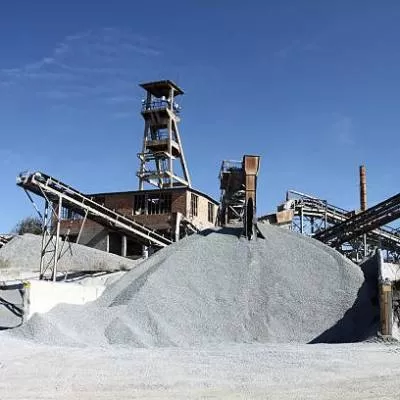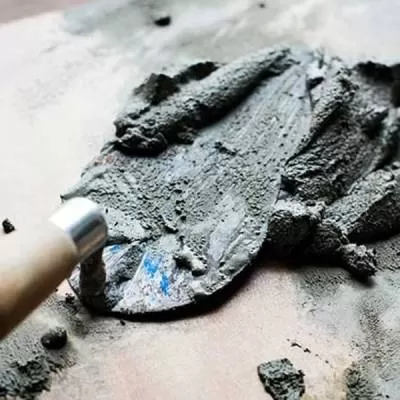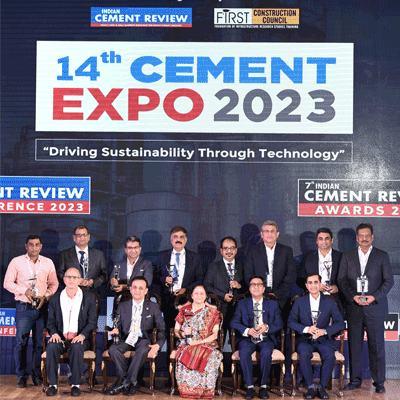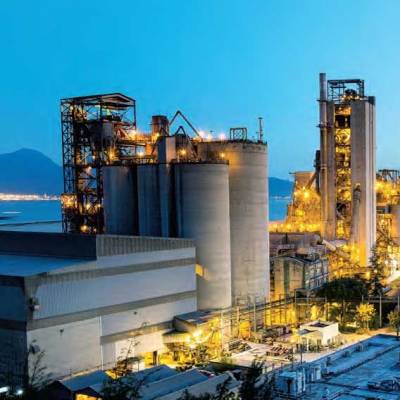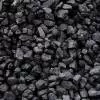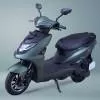- Home
- Building Material
- Cement
- Which are the preferred crushers in the market and what makes them popular?

Which are the preferred crushers in the market and what makes them popular?
The Indian aggregate industry is worth about Rs 1,500 crore, reckons <span style="font-weight: bold;">Onkar Sapre, Country Head, Sales & Marketing, Taurian Engineering. </span> <p></p> <p>To quantify the industry, <span style="font-weight: bold;">V Venkataramana, Vice President-Marketing, Puzzolana Machinery Fabricators</span>, says a simple thumb rule is that the aggregate industry is twice the size of the cement sector, and the market for sand is about thrice the cement market.</p> <p>In 2015, the Indian market for construction aggregates was pegged at 2.2 billion tonne, the second largest national market in the world behind China, says <span style="font-weight: bold;">Vadiraj Pappu, Sales Head, Terex Powerscreen Business, Voltas Mining & Construction Equipment Division.</span> 'As India is 'under construction', demand is rising exponentially.'</p> <p>'Construction equipment in India has seen considerable growth in 2016; we are optimistic this will continue on the back of a surge in investment in infrastructure,' says <span style="font-weight: bold;">Ashoktaru Chattopadhyay, Business Head-Crushing and Screening, Sandvik Mining and Rock Technology India.</span></p> <p> <span style="font-weight: bold;">What's driving growth?</span><br /> Demand for crushers is increasing at over 30 per cent on account of aggressive infrastructure development, especially road projects. And, according to Venkataramana, this is not necessarily only among developers as most road contractors offload up to 50 per cent of their crushing and screening activity to dedicated subcontractors. 'Demand from the mining industry is not moving at the same pace,' he adds.</p> <p>'Demand for aggregates and sand is primarily growing from the road construction and commercial aggregate sectors,' says Anand V, Managing Director, Titan Crushing Machinery (Diamond Group).</p> <p>Road construction is driving demand for crushers typically from contractors with projects of length exceeding 50 km, unless these projects happen to be near a quarry, in which case it is more convenient to buy aggregates from commercial suppliers, explains Sapre.</p> <p>Growth in the demand for aggregate (and hence crushers and screens) is coming mainly from the road sector, says Chattopadhyay. Other drivers are rail projects, bridges, airports and power plants, as well as commercial crushing catering to affordable housing, etc. Sandvik's CH550 cone crusher with a confirmed productivity of 250-300 tph with an inbuilt automation system (intelligent automated setting regulation) is well suited for such requirements. 'We are seeing greater demand from companies applying crushers for recycling purposes such as processing demolition waste into aggregates,' remarks <span style="font-weight: bold;">Ranjit Ravindran, Business Head-Mining Equipment, Voltas. </span>'Smart cities and rail expansion projects (bullet train) are other drivers.'</p> <p> <span style="font-weight: bold;">In-demand crushers: Mining</span><br /> Primarily, higher-capacity, track-mounted crushers are in demand for mining whereas wheel-mounted crushers are being used in a host of other applications, according to <span style="font-weight: bold;">Piero Guizzetti, CEO, MB India. </span></p> <p>'Track mobile crushing and screening plants up to 200 tph are quite popular in iron ore, limestone, bauxite and coal,' says Pappu. 'However, users of bigger capacities (>500 tph) prefer static and roller crushers.'</p> <p>'Limestone applications are mostly using jaw crushers or horizontal shaft impactors while iron ore crushing majorly uses track plants comprising track jaw and cone or HIS (horizontal shaft impactors),' says Sapre. 'A lot of screening jobs at iron ore sites make use of wheel-mounted and track screens.'</p> <p>'While limestone crushing for cement plants uses horizontal impactors at the primary stage and impactors or hammer mills at the secondary stage for the required product sizes, iron ore applications with up to 750/850 mm input feed use jaw crushers and cone crusher along with screens,'notes Venkataramana.</p> <p> <span style="font-weight: bold;">Popular crushers: Aggregates and roads</span><br /> In general, road developers invest in 200/250-tph capacity, wheel-mounted plants, says Sapre, and within this capacity segment, 'NHAI contractors invest in three-stage plants whereas state highway contractors invest in two-stage plants. Some contractors prefer track plants to make granular sub-base (GSB) aggregates. In the aggregates sector, most of the demand is for two-stage plants.'</p> <p>'Usually, static or semi mobile plants are used for commercial aggregates while road and infra developers widely use track mobile crushers or semi mobile crushers of up to 200 tph,' shares Pappu. </p> <p>'But demand is rising for 300 tph track mobile crushers for road applications.' According to Chattopadhyay, the industry is getting more focused towards quality aggregate of the right gradation and shape, such as NHAI specifications for roads. Further, from the production point of view, he says the trend to install 200-tph plants is shifting towards 300-tph plants as the latter are more economically viable to produce aggregates of 20 mm, the size commanding the highest value in the commercial market.</p> <p>'Buyers for road projects are shifting from using 100/150 tph plants to 200/250/300 tph plants with three stages or four stages, depending on the type of road,' agrees Venkataramana.</p> <p>An interesting outcome of aggressive road construction is that it is bringing into the fray smaller contractors with limited sums of money to invest for, say, 10-15 km road stretches, as the larger road developers are going slow in bidding, says Anand.</p> <p> 'These smaller contractors are opting for 200-tph modular skid plants for the convenience of packing up and relocating when the work finishes at a site. They also become small aggregate suppliers for the area they operate in. As against small contractors, the larger, established road developers usually prefer investing in plants of 300-350 tph capacity.'</p> <p> <span style="font-weight: bold;">Crusher bucket, anyone?</span><br /> MB India offers road developers who do not own mines or quarries an alternative to buying readymade GSB of various sizes, Guizzetti tells us. 'They can procure cheaper uncrushed material and crush it to their specific size requirements on site by using the MB crusher bucket (BF90.3), a device that is attachable to any excavator or loader, thus expanding the utility of such equipment and providing a unique level of crusher mobility.'</p> <p>Essentially, the crusher bucket is not an auxiliary item but core equipment for any crushing need, installed on the primary operating equipment of any size and make, he explains. It can replace or complement existing crushing plants, whether static or mobile. </p> <p>The crusher bucket is also useful for contractors and developers who own quarries, as it cuts material transportation costs by enabling on-site crushing and necessitates fewer machines on site. </p> <p>Bucket crushers are a niche concept in mobile crushing but at 25-30 tph, these are fairly limited in capacity for developers with large road and other projects, opines Ravindran.</p> <p>But takers have found uses for the product. 'We deploy a BF 90.3 crusher bucket from MB India at our real-estate project sites to clear and crush rocks on site,' says <span style="font-weight: bold;">Gokulanand Reddy, Director-Projects, Incredible India Projects.</span> 'We weigh the capacity against the major advantages of mobility, avoiding manual labour (just one operator suffices) and faster mobilisation on site. Our crusher bucket has a capacity of 45 tph, which suffices for the sort of road development we do.'</p> <p> <span style="font-weight: bold;">Eco-friendly manufactured (M)-sand</span><br /> Demand for crushed sand has existed in Maharashtra for the last decade but it is now percolating into smaller towns, especially in states like Madhya Pradesh, Chhattisgarh and Tamil Nadu, that are effectively implementing a ban on the use of riverbed sand, observes Anand.</p> <p>Sand mining bans in states like Maharashtra, Kerala and Karnataka are boosting demand for three-stage jaw cone and vertical shaft impactor (VSI) plants used to manufacture M-sand, adds Sapre. </p> <p>Essentially, the sand manufacturing industry is gaining attention in the infrastructure segment as a sustainable business, though this is still at a nascent stage, says Chattopadhyay. </p> <p>'We foresee a lot of potential in this area.' For users' convenience, Taurian offers a versatile VSI that is capable of shaping and crushing aggregates, and making both M-Sand or manufactured sand (0-4.75 mm) and plaster sand (0-3 mm). </p> <p>Venkataramana says commercial aggregate producers set up dedicated sand plants with classification for the improvement of quality, or add sanders or plaster sanders to their existing plants to produce M-sand. </p> <p>Recognition for the value of M-sand would boost demand for M-sand making equipment. </p> <p>M-sand is roughly 80-85 per cent the cost of natural sand, Anand reckons. He expects this demand to pick up as the product is environment-friendly and of a more even consistency than natural sand. Further, its supply is regular and not regulated by illegal traders.</p> <p>Other advantages of M-sand are steady quality and price, unlike the price of natural sand, which varies from state to state and depends on the lead distance and availability, says Sapre. Essentially, the upfront equipment investment puts off users as does the need to manage the waste, the fines that are removed during the manufacturing of M-sand, he adds. To maintain the micro-fines, the sand has to be washed using air or water classifiers. So, another challenge to the use of M-sand is the dearth of water in some parts of India,' says Anand. 'Wash water is an essential part of the process of manufacturing quality M-sand, especially for plaster sand.'</p> <p> <span style="font-weight: bold;">Innovating crushing</span><br /> Whatever the challenge, today's crushers are ready to tackle it head on! Sandvik is focused and has strong expertise in commissioning plants of literally any relevant capacity, starting from 200 tph and above for the aggregate and mining sector, according to Chattopadhyay. 'In depth R&D is behind our VSI crushers, which can produce 100 per cent down -2.36 mm plaster sand; our HSI Model Prisec, which can crush 1,000 mm coal input to 100 mm in a single stage; and the CH 540 range, which is well built for catering to demanding India-based applications.'</p> <p>At the Diamond Group, the focus of R&D is machine metallurgy, innovative crushing and mining solutions, devising more efficient sand crushers and longer-lasting crushers for granite and quartz. </p> <p>For this, it has formed a new initiative, Rockworth Infra Equipment (Bengaluru), with industry stalwart <span style="font-weight: bold;">Subhash Niyogi (former managing director of Wirtgen India) </span>at the helm.</p> <p>Machine innovations are improving the technology available for crushing, thus enhancing operational efficiency. 'We have recently launched the fourth series of the BF 90.3, suitable for 20+ tonne excavators, to a positive market response because of its increased stability, more compact size, and improvement in output performance,' says Guizzetti.</p> <p>'We have launched a new range of tracked screening plants from our principals Terex Powerscreen, the Warrior 600 and Warrior 1800 for R&D waste, municipal waste, and riverbed applications,' says Pappu.</p> <p>And Sapre says, 'We have launched 300-tph cone crushers, revamped the track jaw crusher, launched a 400-tph VSI and 400-tph screens, and horizontal track screens, especially for the mining industry. We now offer both fixed shaft as well as floating shaft crushers.' Howzzat for a crush!</p> <p> <span style="font-weight: bold;">- Charu Bahri</span></p> <p> To share your views on the market for Crushing and Screening Equipment in India, write in at feedback@ConstructionWorld.in</p>



